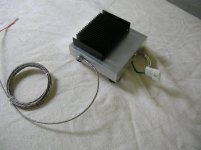spiritchill
Member
Hi all,
I just acquired a Micrologix 1100 and I am interested in getting components to build a PID loop. The purpose is just to help deepen my understanding of PID tuning. This is for my own personal education.
I have seen examples where people have used an analog controlled air valve blowing at a DC motor to generate volts for an analog input.
I was thinking another option would be to use a 0-10V DC pump running water through a flow meter.
Could anyone help guide me to some inexpensive components to build a bench top PID loop application? Preferably something that has a higher speed of variation than temperature control. I am trying to get a hold of the IF2OF2 expansion module so I can make use of 4-20ma or 0-10V analog I/O.
Real life examples of applications you have built would be extremely helpful. Direct links for online shopping would also be helpful (if permitted).
Thanks!
I just acquired a Micrologix 1100 and I am interested in getting components to build a PID loop. The purpose is just to help deepen my understanding of PID tuning. This is for my own personal education.
I have seen examples where people have used an analog controlled air valve blowing at a DC motor to generate volts for an analog input.
I was thinking another option would be to use a 0-10V DC pump running water through a flow meter.
Could anyone help guide me to some inexpensive components to build a bench top PID loop application? Preferably something that has a higher speed of variation than temperature control. I am trying to get a hold of the IF2OF2 expansion module so I can make use of 4-20ma or 0-10V analog I/O.
Real life examples of applications you have built would be extremely helpful. Direct links for online shopping would also be helpful (if permitted).
Thanks!







